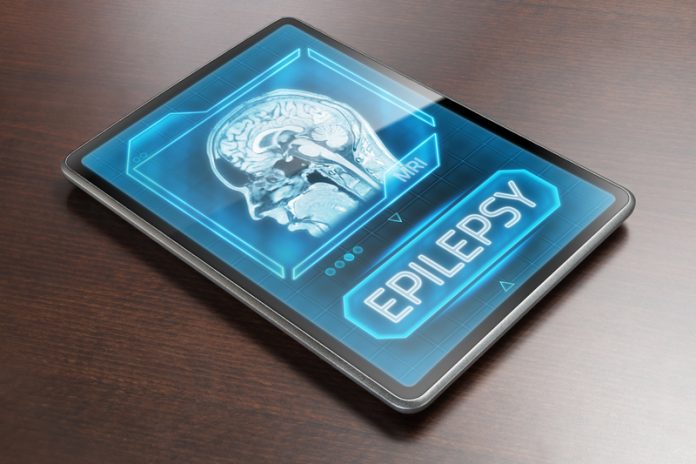Electroencephalography (EEG)
EEG visualises voltage differences recorded with electrodes located on the head. These very small (typ. 10-50 μV) voltage fluctuations resulting from ionic current flows within the brain. One of the key advantages of EEG recordings as compared to imaging techniques such as MRI (Magnetic Resonance Imaging) is the high temporal resolution of an EEG recording. This allows for detection of minute changes in brain activity within milliseconds. To increase spatial resolution a routine EEG recording uses 19 electrodes dispersed over the head.
Routine EEG
A typical routine EEG is recorded with the patient’s eyes closed with phases of open eyes to test the patient’s EEG reactivity. The electrodes (typically AgAgCl cup or bridge electrodes) are located on the patient’s head with a standardised layout called the 10/20 system. The 10/20 system positioning of the electrodes assures for reproducibility and adaptation to individual head sizes. To detect epileptic seizures and other epileptic disorders typically two provocations methods “photic stimulation” and “hyperventilation” are used during a routine EEG recording.
There exist certain kinds of epilepsies which may surface upon photic stimulation. That’s why epileptics are not recommended to go to the disco if they use stroboscopic light effects. If you breathe deeply for 2-3 minutes you may feel dizzy and an epileptic person may develop a seizure which the routine EEG tries to demonstrate in a controlled manner.
24h EEG recording
To record an EEG over a period of 24 hours is recommended if the routine EEG did not deliver conclusive information regarding potential epileptic activity. In this application scenario, the patient wears a compact device that records EEG activity over a prolonged time (typically 24 hours). The electrodes (preferred cup electrodes) are affixed to the head (e.g. with Collodion) and conductive electrode gel is injected through a hole in the electrode to assure electric conductivity between skin and electrode. The data are then read out and reviewed for epileptic activity (such as seizures or epileptic spike and wave discharges, etc.). The review of 24 hours of EEG data can be quite a time consuming and automatic computer-based methods have become available to pre analyse the data for faster final test results.
Video-EEG
Epileptic activity in the brain may be accompanied by motor disturbances such as erratic limb movements and minute motor disturbances. To allow for a more detailed analysis of such periods it has become very helpful to record, in a time synchronised fashion, patient’s activity along with the EEG. The video recording today will be a digital recording allowing for easy computer-based retrieval and storage. Zoom and cut features are helpful for analysis and archiving purposes. If two cameras are being used a total view and a detailed view (e.g. just the head) may be recorded, allowing for even better video analysis quality.
Epilepsy Monitoring
One of the goals of Epilepsy Monitoring will be to find the best mix of medication to get the patient seizure-free. In this setting, the patients are admitted to the Epilepsy Monitoring Unit (EMU) for a prolonged period of Video-EEG recording in a safe and well-controlled environment. If it turns out that a patient’s epilepsy is resistant to any anti-epileptic medication respective surgery may be the last hope to become seizure-free. In this case, the medication will be reduced and seizures are provoked and recorded for detailed analysis. One of the targets is to find out whether the epileptic activity is of focal origin. If this is the case and it can be well documented this will be the basis for potential neurosurgical intervention.
Electrocorticography (ECoG)
To localise focal activity the scalp recorded EEG will not suffice for neurosurgical intervention (cerebrospinal fluid and skull tend to smear surface recorded potentials). In this case, strip and grid electrodes (sometimes also depth electrodes) implanted by neurosurgeons will be used to record electrical activity from the brain; a procedure referred to as Electrocorticography. This technique allows for better analysis of low voltage and high-frequency electrical activities and since the strips and grids use smaller electrodes and have closer electrode spacing the spatial resolution is improved as compared to scalp derived recordings.
Summary
Brain electrical activity can be recorded with surface electrodes and in special cases with subdural and intracranial electrodes. The various EEG recording techniques presented in this paper are currently the best way to diagnose epileptic activity and also the best way to monitor therapy efficacy. Therefore the EEG can be considered as the gold standard in epilepsy diagnostics.
Dieter Grossegger, PhD
Chief Executive Officer
Tel: +43 (0)1 368 17 97
office@alphatrace.at











